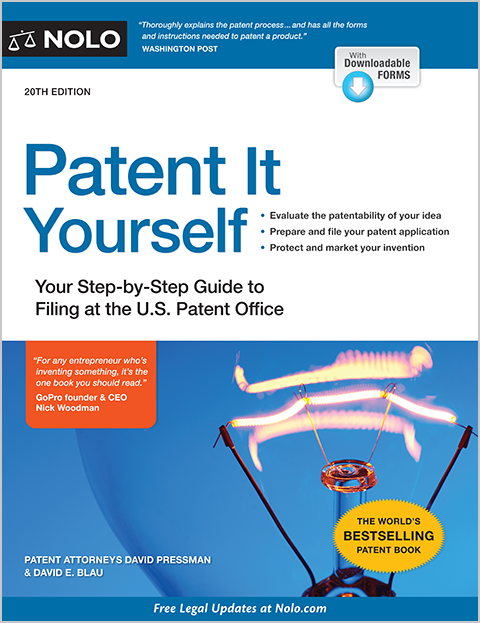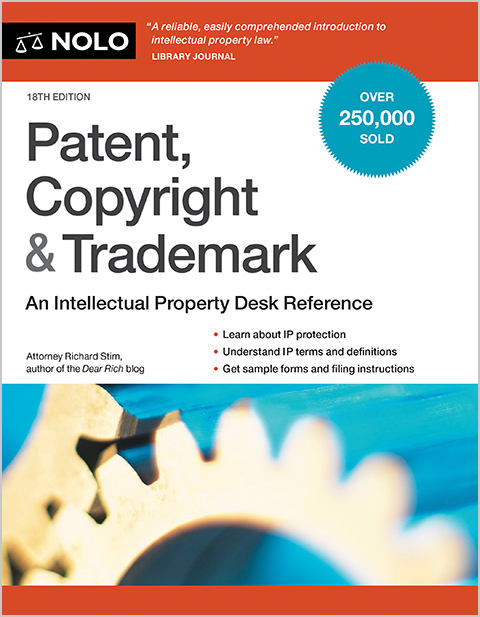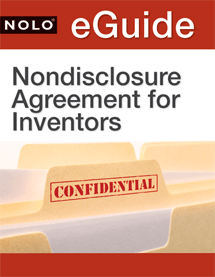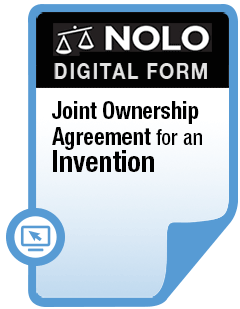A provisional patent gives you “Patent Pending” status for your invention and provides other benefits prior to filing for a full patent. Learn about the steps to follow when filing a provisional patent application.
A provisional patent gives you "Patent Pending" status for your invention, and buys time (a year) for you to file a full patent application. If you obtain a provisional patent, you can use the filing date of your provisional patent application to establish priority over competing patent applications filed after your provisional application. A provisional patent application is simpler, less expensive, and less time-consuming than a full patent application. Indeed, most inventors can prepare and file a provisional patent application on their own.
Here are three basic steps to preparing a provisional patent application:
- Conduct a patent search for known inventions similar to yours, to make sure your idea is really new (or "novel" in patent terminology).
- Accurately describe how to make and use your invention.
- Complete and file the provisional patent application with the U.S. Patent and Trademark Office (USPTO).
Below are details for each of these three steps.
Conduct a Patent Search for Previous Inventions
While provisional patent applications are relatively simple to prepare and inexpensive to file, you'll want to feel comfortable that your invention is patentable before you invest your time and energy in seeking a provisional patent. Novelty—that an invention is new and different compared to existing inventions—is a key requirement for patentability. The USPTO doesn't evaluate provisional patent applications to determine novelty, but it examines full patent applications closely to determine that an invention is new.
If you eventually seek a full patent, patent examiners will look at what is known as prior art—previous inventions described in patents and publications—to determine whether your invention is novel. If an examiner finds that somebody built, patented, or documented the same or a similar invention before you, you won't get a patent. If you're unlikely to get a full patent because your invention is similar to an existing invention, there's little point in seeking a provisional patent. So, you should perform a basic prior art search before filing your application.
What is prior art? It includes all previous inventions that are available to the public, including inventions that are described in prior patents and in journals and other publications, as well as inventions that have been made available for sale to the public. You can conduct a preliminary patent search online using Google Patents, the USPTO's Patent Public Search tool, and basic web searches. Later, before filing your regular patent application, you can do a more thorough search.
For more information about patent searching and the process of applying for a full patent, see Patent It Yourself, by David E. Blau (Nolo).
Describe Your Invention
Your next task in preparing to file a provisional patent application is to explain exactly what your invention is, what it does, and how to make it. Your description must be detailed enough so that anyone trained in the field is able to reproduce your invention. You can describe your invention in two ways: with pictures and with words.
Describing Your Invention With Drawings
A patent drawing is any illustration of your invention, including a line drawing, flowchart, schematic, or photograph. Although you are not required to include drawings with your provisional patent application, as a practical matter you might need drawings to describe how to build and use your invention.
The USPTO doesn't impose detailed rules on provisional patent application drawings—the drawings must simply be understandable and fit within size limitations. You can use black and white or color photographs, computer created drawings, or handmade drawings. Obviously, your visual representation should conform to (and definitely should not contradict) your written explanation of how to make and use your invention.
Describing Your Invention With Words
When describing your invention narratively, you'll need to answer the following 10 questions:
- What is the name of your invention?
- Who are the inventors?
- Was the invention created under a government contract?
- What does your invention accomplish?
- What drawing figures will you include?
- What are the parts or components?
- How do the components connect?
- How does the invention operate?
- Are there other ways to construct your invention?
- Can your invention be used in more than one way?
Your answers to the final five questions are especially important, as they describe in detail the structure of your invention, how it operates, and any alternative embodiments. The description of your invention is the "specification" part of your provisional patent application. The specification will form the basis for your patent claims if you later file a regular patent application.
Filing Your Provisional Patent Application
You can file your provisional patent application by mail or electronically, but the USPTO encourages electronic filing. In addition to the application form, you'll include a cover sheet containing the following information:
- title of the invention
- names of all inventors
- inventors' home addresses residence(s)
- name and registration number of attorney or patent agent if you're using one
- an address where the USPTO can send correspondence relating to your application, and
- the name of any U.S. Government agency that has a property interest in the application.
Your application must also be accompanied by the appropriate fee. As of July 2024, filing fees for provisional patent applications were $60 for micro entities, $120 for small entities, and $300 for all others. Learn more about who qualifies for micro entity and small entity status here. You should also check the USPTO's current fee schedule in case the fees have changed.
Next Steps
For a complete guide on filing a provisional patent application, see Patent Pending in 24 Hours, by Richard Stim (Nolo), If you're unsure about whether your invention is likely patentable, or you need help preparing your provisional patent application, consider consulting a patent attorney. Two sites that are part of the Nolo family, Lawyers.com and Avvo.com, provide excellent and free lawyer directories. Visit www.lawyers.com/find-a-lawyer and www.avvo.com/find-a-lawyer to begin your search. Also, the USPTO maintains a searchable registry of active patent attorneys and patent agents.
Talk to a Lawyer
Need a lawyer? Start here.
How it Works
- Briefly tell us about your case
- Provide your contact information
- Choose attorneys to contact you
- Briefly tell us about your case
- Provide your contact information
- Choose attorneys to contact you



